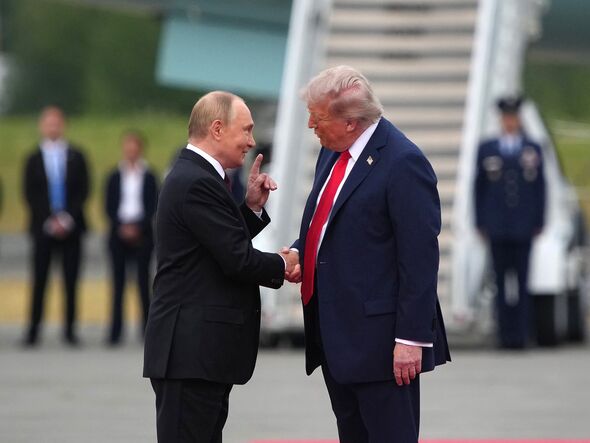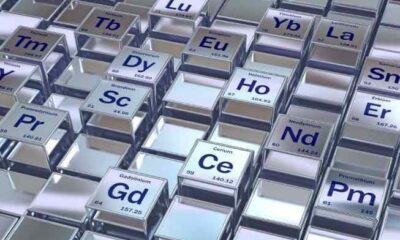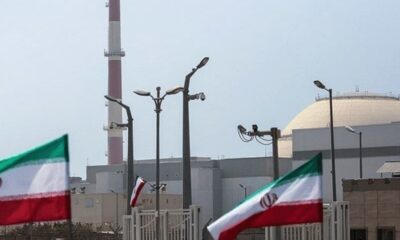World
Trump’s Ukraine Peace Plan Demands Major Concessions from Kyiv

A new peace plan aimed at resolving the ongoing conflict in Ukraine has been unveiled, revealing significant compromises expected from the Ukrainian government. According to details published by The Telegraph, the plan, attributed to former United States President Donald Trump, requires Ukraine to relinquish control of the entire Donbas region and prohibits the stationing of NATO troops within its borders.
The Donbas, which includes the eastern provinces of Donetsk and Luhansk, has been a major battleground since the onset of the conflict. Under Trump’s proposal, this territory, along with Crimea, would be recognized as de facto Russian territory, a stance potentially supported by the United States. Furthermore, the regions of Kherson and Zaporizhzhia would remain frozen at their current frontlines, with Russia expected to relinquish other occupied Ukrainian areas.
In light of the stalled peace negotiations, President Trump has expressed growing frustration over the lack of progress. He has previously advocated for a ceasefire along existing battle lines. Ukrainian President Volodymyr Zelensky referred to the plan as a “good compromise” last month, although uncertainty remains about his willingness to accept the loss of the entire Donbas region.
Key Components of the Peace Proposal
The 28-point plan, reportedly drafted by Trump’s special envoy Steve Witkoff in collaboration with Russian counterpart Kirill Dmitriev, was developed without Ukrainian input. Key provisions include significant security guarantees for Ukraine, contingent on a substantial reduction of its military capabilities and the relinquishment of long-range weaponry. Additionally, Ukraine would be expected to commit to never joining NATO, a core demand from Russian President Vladimir Putin.
Under the proposed framework, Russia would also be expected to refrain from invading neighboring countries, including NATO member states. Should Russia violate this agreement, it would face severe sanctions. In return, Moscow is anticipated to gain economic incentives, including a potential reinstatement into the G8.
European nations are reportedly expressing concerns over the plan, viewing it as excessively favorable to Russia. As the conflict nears its fourth anniversary in February, negotiations are set to continue. President Zelensky and Trump are scheduled to discuss the draft peace deal in the coming days. The Ukrainian leader’s office stated, “We are ready now, as before, to work constructively with the American side, as well as with our partners in Europe and around the world, so that the outcome is peace.”
Reports indicating that NATO troops would be barred from Ukraine raise questions regarding the feasibility of a proposed multinational peacekeeping force, led by the UK and France. Initially intended to aid in securing a ceasefire, the absence of NATO troops could complicate efforts to stabilize the region.
As discussions progress, the implications of Trump’s peace plan will continue to unfold, shaping the future of Ukraine and its relationship with both Russia and NATO.
-

 Entertainment3 months ago
Entertainment3 months agoAnn Ming Reflects on ITV’s ‘I Fought the Law’ Drama
-

 Entertainment4 months ago
Entertainment4 months agoKate Garraway Sells £2 Million Home Amid Financial Struggles
-

 Health3 months ago
Health3 months agoKatie Price Faces New Health Concerns After Cancer Symptoms Resurface
-

 Entertainment3 months ago
Entertainment3 months agoCoronation Street’s Carl Webster Faces Trouble with New Affairs
-

 Entertainment3 months ago
Entertainment3 months agoWhere is Tinder Swindler Simon Leviev? Latest Updates Revealed
-

 Entertainment4 months ago
Entertainment4 months agoMarkiplier Addresses AI Controversy During Livestream Response
-

 Science1 month ago
Science1 month agoBrian Cox Addresses Claims of Alien Probe in 3I/ATLAS Discovery
-

 Entertainment4 months ago
Entertainment4 months agoKim Cattrall Posts Cryptic Message After HBO’s Sequel Cancellation
-

 Entertainment2 months ago
Entertainment2 months agoOlivia Attwood Opens Up About Fallout with Former Best Friend
-

 Entertainment3 months ago
Entertainment3 months agoMasterChef Faces Turmoil as Tom Kerridge Withdraws from Hosting Role
-

 Entertainment4 months ago
Entertainment4 months agoSpeculation Surrounds Home and Away as Cast Departures Mount
-

 World3 months ago
World3 months agoCole Palmer’s Mysterious Message to Kobbie Mainoo Sparks Speculation




















